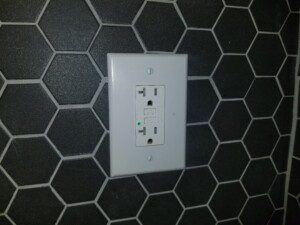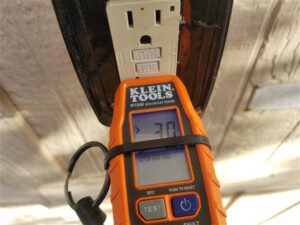
GFCI devices are usually found at wall outlets in wet areas such as the kitchen, bathroom and exterior, but there are also specific GFCI circuit breakers that can be installed in an electrical panel. If a GFCI circuit breaker at the electrical panel is used, all the receptacles and outlets within that circuit will be protected by the GFCI. In the case of when GFCI protection is used at a wall outlet, all electrical outlets wired after (downstream) of the outlet are GFCI protected. In most cases, GFCI outlets are used, since they are considerably less expensive than GFCI circuit breakers.
GFCI outlets should be tested periodically (about once per month) to ensure that they are operational. GFCI receptacles are equipped with two buttons, one is a “test” button, and the other is the “reset” button. The test button should cause the GFCI to trip when pressed, and turn off power to the outlet and any other outlets downstream. The reset button will reset the GFCI switch, and allow power to flow again. If when testing GFCI the switch does not trip, the GFCI receptacle may require re-wiring or replacement. Loose or improper wiring at a GFCI can cause a failure. Or, the GFCI device may be past its expected life and simply just stopped working.

Replacing a GFCI outlet can be easy, but it is important to have the right tools to ensure safety. It is also important to ensure that the outlet is properly wired. Ensuring that the “load” and “line” wires are mounting at the proper locations. Make sure to wear personal protective equipment when doing any home improvement project and consider hiring a professional for potentially hazardous projects including electrical repairs.
Check out the video below to learn more about how to replace GFCI outlets.
